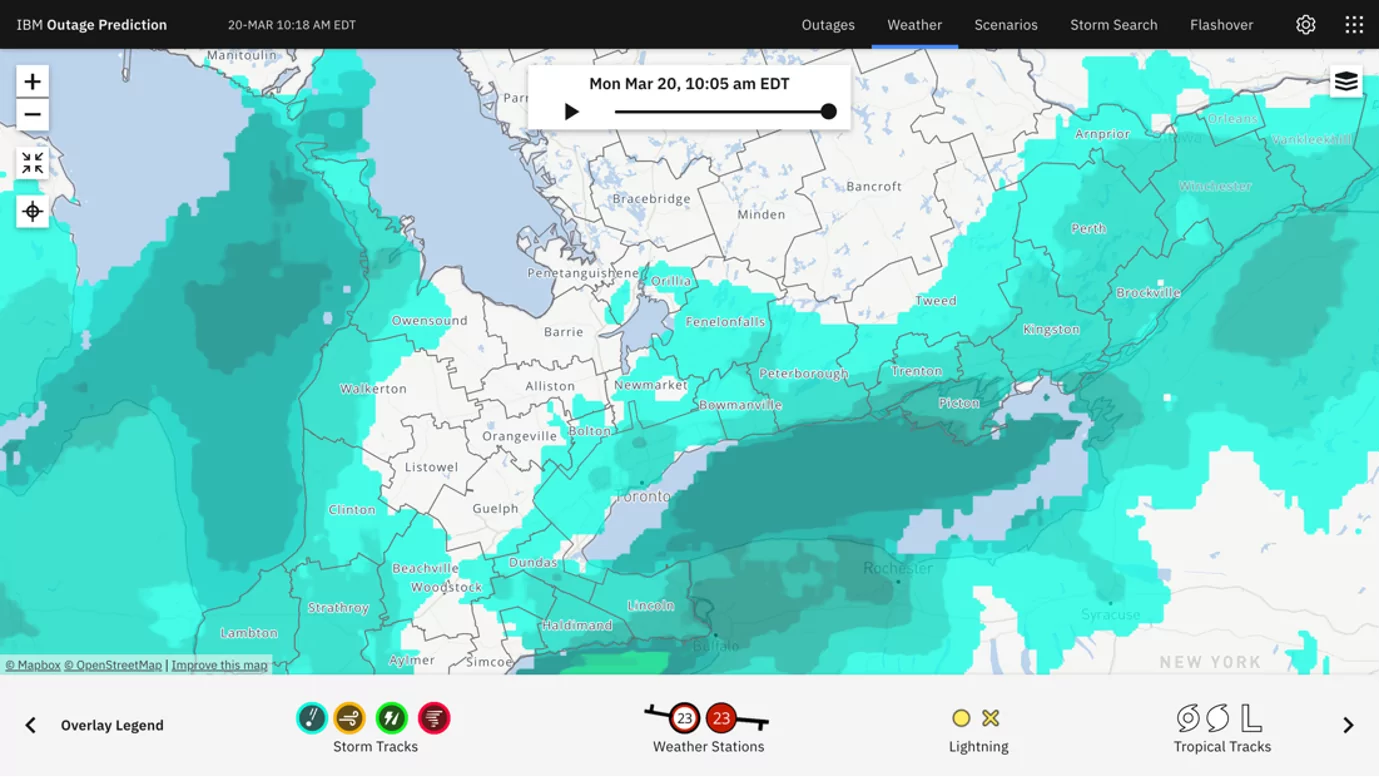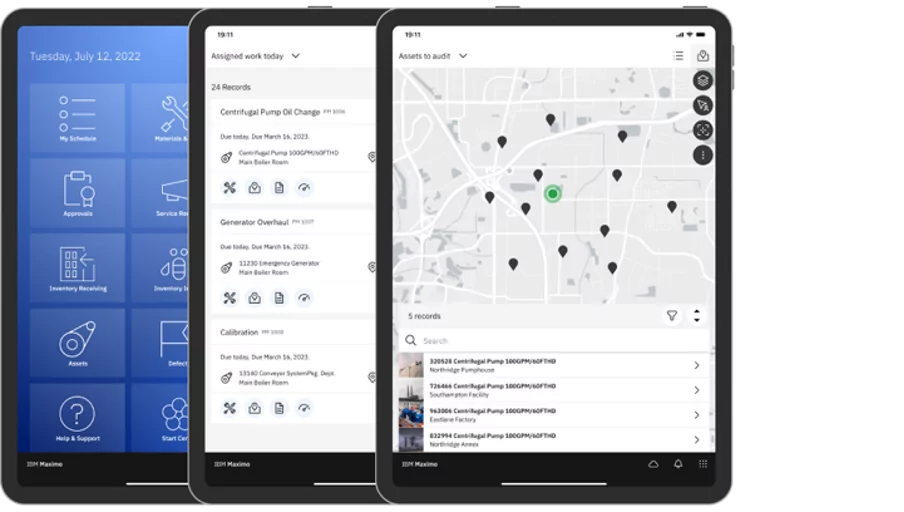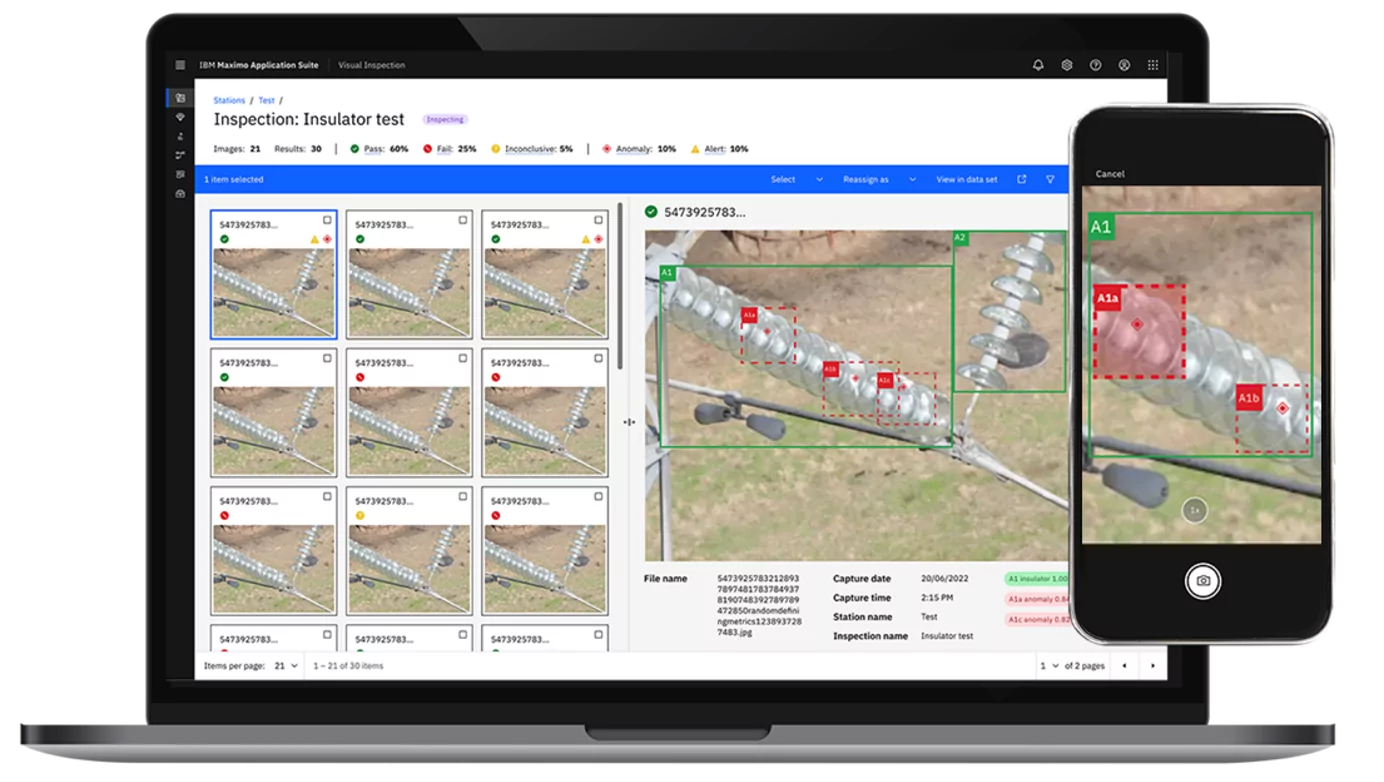<!—->
<!– –>

Extreme weather events can be catastrophic to both people and the environment. But flash floods, hurricanes and winter storms also profoundly impact utilities. With electricity being the backbone of modern life and business operations, a loss of power can have disastrous consequences that require more than a flashlight and battery-powered radio to be solved. Today, utilities are meeting these challenges and risks with innovation by leaning on data and AI to prepare for the next event.
US utilities grapple with cold, catastrophic events
In 2023, the US experienced 28 separate weather and climate disasters, ranging from severe thunderstorms to wildfires, that caused around USD 92 billion in damages. However, over the past 12 years, the US has encountered at least five events where unforeseen freezing weather caused outages and posed threats to grid reliability.
In 2021, Winter Storm Uri wreaked havoc on Texas, leaving over 4.5 million people without power and causing economic losses between USD 80 billion and USD 130 billion. As temperatures plummeted, power plants relying on various fuel types began to fail. It became evident that the entire system was unprepared for such extreme freezing conditions and utilities began “load shedding,” which caused a city-wide blackout. And in December 2022, Winter Storm Elliott struck the US Eastern Interconnection grid, resulting in 90,500megawatts (MW) of generation experiencing unplanned outages.

Challenges to keeping the power on during severe weather
The root of the monetary damages, outages and grid unreliability can be found in these key challenges currently plaguing US utilities:
- Inability to identify at-risk assets: Many US utilities operate on aging infrastructure (such as power lines) that is prone to breakdowns when exposed to harsh weather conditions such as heavy rain, flood waters and strong winds. Identifying at-risk assets in advance is a main challenge for utilities.
- Ineffective outage predictions: Many utilities struggle to accurately predict outages, and load and energy demand due to a lack of weather forecast parameters, inconsistent data and inadequate technology. Notably, during Winter Storm Elliott, the total load forecast was underestimated by 23,047 MW.
- Delayed or inadequate response time: Due to a lack of advanced technology and the inability to predict future events accurately, utilities are unable to mobilize crews efficiently, which leads to delayed response time.
- Failure to meet winterization standards or conduct inspections efficiently: In accordance with Federal Energy Regulatory Commission guidelines, utilities must develop winter weather preparedness plans, including inspection and maintenance checklists for the freeze protection measures of generating units. The lack of adherence to winterization standards and failure to inspect thoroughly ahead of storms result in freezing equipment and pipes.
- Ineffective vegetation management: Vegetation contact with utility lines and poles cause most power outages, and managing vegetation is one of the largest budgeted expenses for utilities. Utilities spend up to USD 8 billion per year on overhead line and vegetation management.
In addition to these challenges, unplanned generating unit losses and a reduction in natural gas production are significant contributing factors.
Preparing for disaster with innovation and intelligence
While natural disasters are inevitable, the power of data, AI, intelligent weather insights, IoT, geospatial technology and advanced asset management technologies can significantly enhance disaster management and fortify the grid.
The combination of the IBM® Maximo® Application Suite (MAS) and the IBM® Environmental Intelligence Suite offers a robust tool to help utilities better prepare for extreme weather conditions:
1. Reliability centered maintenance:
Aging assets combined with the inability to identify at-risk assets in advance creates a complex, dangerous environment for utilities. IBM is solving these challenges by combining reliability centered maintenance (RCM), enterprise asset management (EAM), and asset performance management (APM) capabilities into a single platform. The IBM Maximo Reliability Strategies application enables end-to-end processes for initiating, completing and deploying RCM studies and tracking outcomes. These advanced capabilities empower organizations to make data-driven maintenance decisions, focus on critical and at-risk assets, and strategically allocate the exact level of maintenance that organizations require to preserve their functions. Utilities can also develop strategies for cold-weather reliability standards that are tailored to individual assets.
Diving deeper, the asset performance management (APM) with MAS helps organizations determine how and when assets are going to fail and identifies at-risk assets in advance so that they can take immediate actions. Using AI-powered tools such as IBM Maximo Monitor, IBM Maximo® Health and IBM Maximo Predict, utilities can optimize maintenance strategies, reduce maintenance costs and prolong the lifespan of assets by proactively understanding their health and associated risks. The features of this platform can enhance asset performance in extreme situations, minimizing unplanned downtime.
2. Outage prediction:
MAS, in conjunction with IBM Environmental Intelligence Suite Outage Prediction, enables utilities to predict and monitor outages by location with increased confidence by using weather intelligence data and taking relevant actions. This approach improves demand response, allowing for advanced asset fixes, preparation and the quick integration of backup generation plants into the grid. As an example, discover how IBM successfully implemented IBM Environmental Intelligence Suite Outage Prediction for Hydro One, which resulted in a 33% improvement in power restoration during an ice storm.

3. Field service management:
To overcome the challenges of delayed crew response and paper-based inspections, utilities can harness the power of IBM Maximo Mobile and MAS. These products provide efficient asset management, intelligent scheduling and dispatching, which results in faster crew mobilization and better emergency preparedness.

IBM Maximo Mobile also enables the streamlining of inspection and maintenance checklist processes. For instance, mobile inspections can be integrated with IBM Maximo Visual Inspection, which uses AI to automatically detect visual inspection issues.

4. Vegetation management:
The IBM Environmental Intelligence Suite Vegetation Management platform delivers AI-driven insights about vegetation growth by using satellite data and Geiger-mode LiDAR combined with weather insights to help utilities make more informed decisions. For example, deciding where to trim trees ahead of a storm could be prioritized based on criticality.
As extreme weather and climate events continue to increase in severity, utilities need the tools to overcome pervasive industry challenges and boost their severe weather preparedness. With data, AI, intelligence and more, IBM’s client resilience solutions can be an effective choice in keeping the lights on today and the grid resilient tomorrow.
Learn more about the IBM Maximo Application Suite (MAS)
Was this article helpful?
YesNo
More from Sustainability

March 8, 2024
Renewable energy trends and developments powering a cleaner future
6 min read – In a warming world, the transition from fossil fuels to renewable energy is heating up. Global capacity for renewable power generation is expanding more quickly than at any time in the last thirty years, according to the International Energy Agency (IEA). The agency predicts that by 2025, renewable energy will surpass coal to become the world’s top source of electricity. Wind and solar photovoltaic (PV) power generation are forecast to exceed nuclear power generation in 2025 and 2026, respectively. And…

February 29, 2024
Unlock the power of systems modeling with IBM Engineering Systems Design Rhapsody 10.0
3 min read – Software and product development teams need to overcome many challenges to deliver high-quality, price-competitive offerings that meet compliance and regulatory standards. Traceability, scalability, complexity management, collaboration, tool integration and interoperability cause engineering projects to suffer from inefficiencies, such as project delays, siloed processes and unconnected tools, which hinder progress and productivity. In today’s competitive landscape, a powerful model-driven software engineering tool is no longer a luxury; it’s a strategic necessity that enables informed decision-making, operational optimization and innovation. Today we…

February 29, 2024
Renewable energy in action: Examples and use cases for fueling the future
5 min read – As more countries, companies and individuals seek energy sources beyond fossil fuels, interest in renewable energy continues to rise. In fact, world-wide capacity for energy from solar, wind and other renewable sources increased by 50% in 2023. More than 110 countries at the United Nations’ COP28 climate change conference agreed to triple that capacity by 2030, and global investment in clean energy transition hit a record high of USD 1.8 trillion in 2023. But with all of this new capacity,…
IBM Newsletters
Get our newsletters and topic updates that deliver the latest thought leadership and insights on emerging trends.
Subscribe now
More newsletters
- SEO Powered Content & PR Distribution. Get Amplified Today.
- PlatoData.Network Vertical Generative Ai. Empower Yourself. Access Here.
- PlatoAiStream. Web3 Intelligence. Knowledge Amplified. Access Here.
- PlatoESG. Carbon, CleanTech, Energy, Environment, Solar, Waste Management. Access Here.
- PlatoHealth. Biotech and Clinical Trials Intelligence. Access Here.
- Source: https://www.ibm.com/blog/how-utilities-can-prepare-for-extreme-weather-with-data-and-ai/



